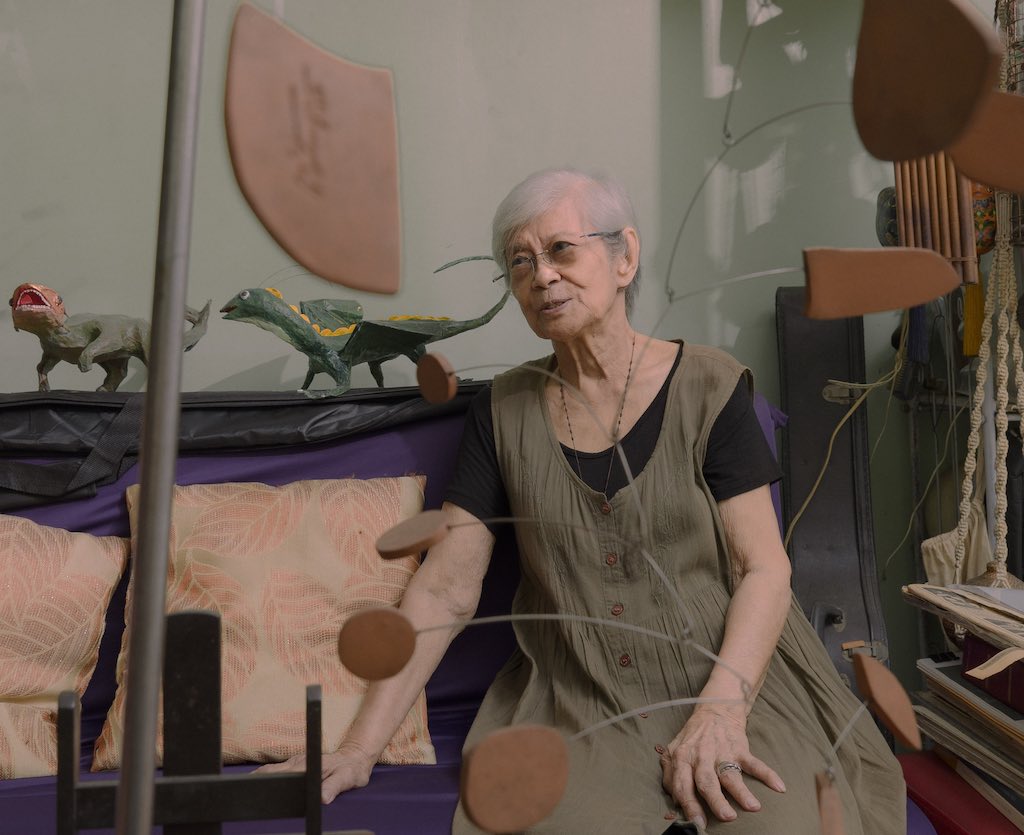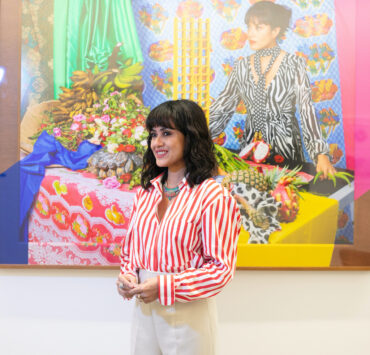An old piano remains quiet at the foot of the bed of painter Rosario “Charito” Bitanga. Its keyboard, covered and protected from dust, hints that it has been untouched for some time now. She is staring at the piano until she utters words with a slight sadness in her tone. “I already forgot how to play it,” she says while feeling her fingers on the other hand. She turns away from the piano and opens a box that contains her paintbrushes then directs us to a small corner where she spends most of her day painting. It is a moment of realization: those fingers remember rhythm while holding a paintbrush.
“Papa, dalawa na kami. Iba naman,” she recalls telling her father as she had to give up on playing the piano because her sister wanted to become a concert pianist, a dream that was realized for the latter. “That’s why he wanted me to be a lawyer… But you see artist ka, I have to tell the truth. I’m not that type kaya siguro dito ako sa painting,” she continues.
Charito, a nickname her colleagues and friends would call her, shares that her earliest experience of drawing was when she started sketching personalities and celebrities she admired based on photographs. One of which was her crush American actor Allan Lane. “When I was in high school I was drawing already. In fact, I was drawing my crush Allan Lane. That’s how I learned.”
After graduating high school in 1954 at the Philippine Women’s University (PWU), Bitanga enrolled in pre-law at the University of Santo Tomas. She fondly remembers being classmates with actress Dorothy Jones, whose screen name she struggles to remember. Bitanga starts to hum the folk song “Waray Waray” to refer to the late actress Nida Blanca who starred in the 1954 film of the same title.
[I]n painting, you have to be patient. Be patient. Even in writing [and] in any form of art.Rosario Bitanga
Finding herself more inclined to visual art, she then shifted to the School of Fine Arts where she was mentored by modernists Victorio Edades and Galo Ocampo. Recognizing Bitanga’s talent, printmaker and founder of Contemporary Arts Gallery on Mabini Street in Ermita Manuel Rodriguez Sr. wrote her a dedication dated June 28, 1957: “Dear Charito, you are young and you have a good start in life and in art. Keep it up. Success is only a matter of time.” She keeps Rodriguez’s dedication with her up until now, a foreshadowing of the things that came her way.
What started out as a hobby became a lifelong career and passion when she pursued a master’s degree in fine arts at the prestigious Cranbrook Academy of Arts in Bloomfield Hills in Michigan, the same institution where artist Jose Joya earned his graduate degree.
She was under the tutelage of American painter Fred Mitchelle, who was a prominent abstract expressionist in the ’50s. During this time, Mitchelle encouraged Bitanga to further explore and develop her own style of painting, which resulted in the “Galloping Horses” painting inspired by her thrilling experience of watching a horse race one weekend with her uncle. The piece captures the intensity of movements through the interaction of shapes and masses.
Her efforts finally paid off when “Galloping Horses” won 3rd prize in the annual art competition held by the Pontiac Society of Artists in 1959. The award was a rare feat though not impossible for Bitanga whose perseverance and distinctive painting style earned her the title of one of the preeminent and notable woman artists who pioneered abstraction in the Philippines.
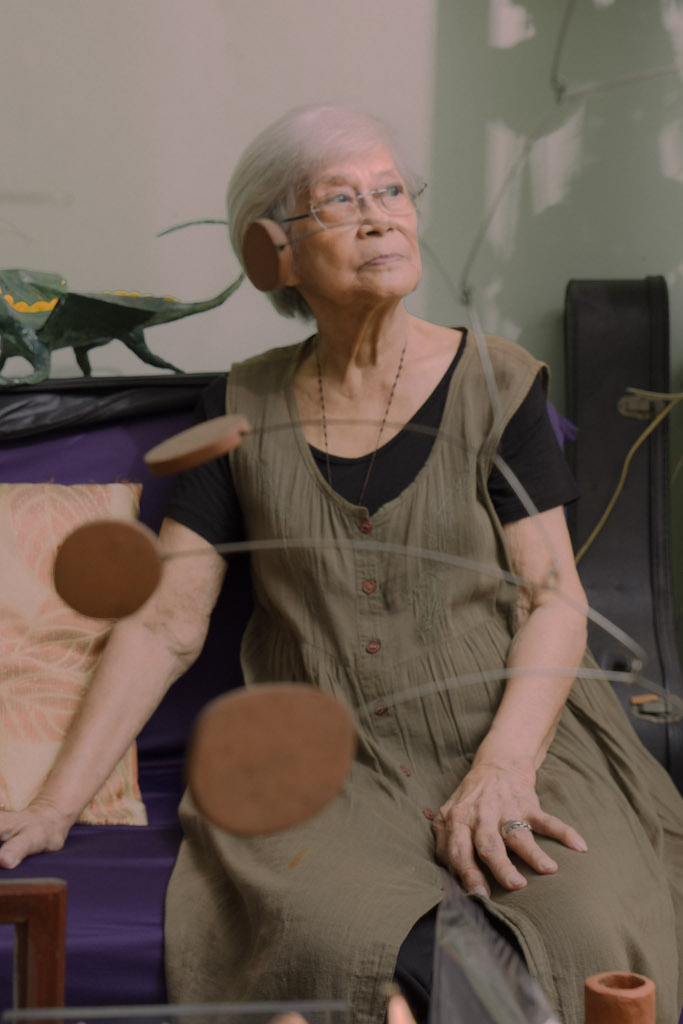
Returning and becoming the dean of the Institute of Fine Arts and Design of PWU in 1988, she would always emphasize the importance of going back to basics and the value of patience in art making. “[When] we were in Cranbrook, we were supposed to know how to make a canvas, how to prime.
“I keep telling my students before that you’ve got to know the principle of design because you have to know the proportion, the definition of lines and how it works, and how they go about it. If you know these things, it will move… for instance, like that, it’s diagonal. It means it’s moving,” explains Bitanga while pointing out a detail in one of her paintings among a stack of other works in the living room.
“To me, each painting is a problem in itself that has to be dealt with within its own terms. The approach must be unique to itself. There is no one approach to a series,” Bitanga wrote in an email. She elaborates on this answer in an in-person interview at her San Andres, Manila home. She explains that “Everything has a problem. You have to solve it in a way na… It doesn’t mean to say that you have already a set of things in mind, that you have to paint right away, to finish it right away like the answer is there already. No. It has to be done step by step.”
To me each painting is a problem in itself that has to be dealt with within its own terms. The approach must be unique to itself. There is no one approach to a series.
Giving a more concrete example, she describes how one should start learning how to paint a still life. “Still life, you cannot even hold. Iba ang composition. If you’re still learning in still life, you have to learn where the light is coming from.” She also points out the importance of basic elements in abstraction. “Go step by step. There should be movement in line and colors. Abstract is the highest form of art.”
Bitanga is one of the featured artists in this year’s Art Fair Philippines. The special presentation will re-introduce her works to “a wider audience,” curator Miguel Rosales said in an email exchange.
Titled “Rosario Bitanga: Past, Present, Participant,” the exhibition “does not zero in on any specific period of her artistic career, but is more like a general overview of it. It is like a mini visual timeline to give the Art Fair viewers a glimpse of her oeuvre,” he adds. It will consist of some archival works from the artist’s collection, works borrowed from collectors, and some recent works by the artist whose practice spans seven decades.
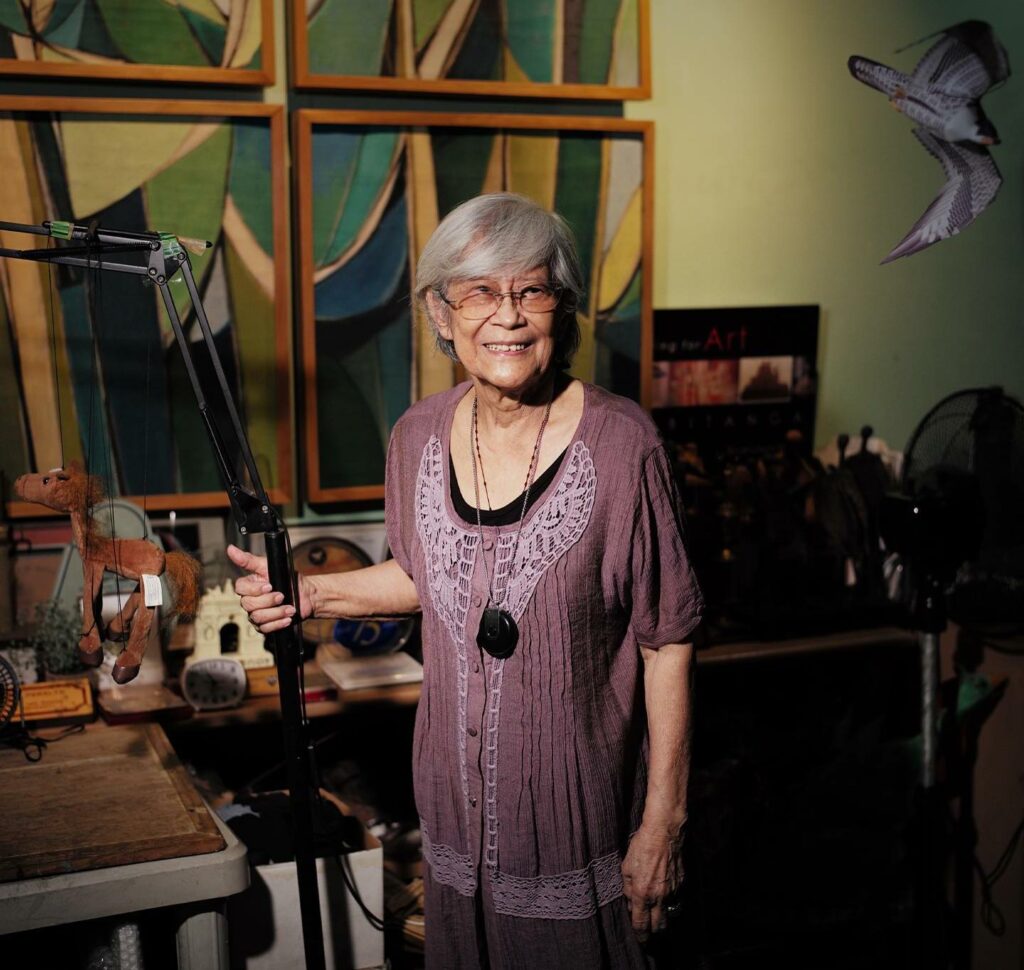
When asked whether her personal values in art have changed throughout the years, she makes a striking comparison with her penchant for playing the piano.
“Hindi naman. It’s not like that na abruptly kaagad-agad it changes. It’s not like that. It has to be step by step. It’s not agad-agad na mawawala. You got to know pala the history in order for you to get to the point where you want to be,” she ponders.
Bitanga’s most recent accomplishment is going down in history for her series of works—their digital copies and images, at least—that were loaded onto a commercial rocket and sent to the moon through the Artemis Program Lunar Codex. According to its website, the arts and culture project, supported by the U.S.’s National Aeronautics and Space Administration, is “a collection of works from tens of thousands of creative artists across the globe, launched in time capsules to the moon.”
Despite the fact that her body of work was sent to the moon, a prolific artist that she is from the very beginning, Bitanga hasn’t stopped creating. It is normal for her to be hands-on in producing works, which manifests in her latest paper mache creations of a dragon and a crocodile that are both displayed in her living room.
Go step by step. There should be movement in line and colors. Abstract is the highest form of art.
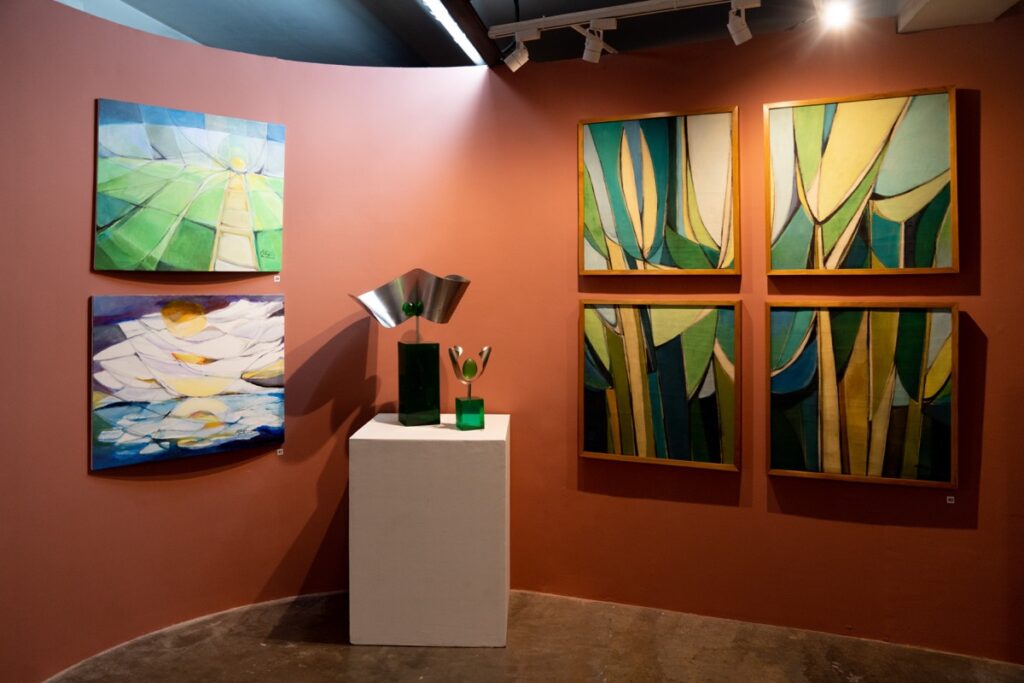
Still making art at 88, she continues to explore other mediums—from painting, sculpture, and printmaking to jewelry, macrame, and paper mache—remarking that she doesn’t believe in having a single style. The endless possibility of creation that takes shape in different forms has kept her enthused and productive.
“When I do not paint, I do paper mache. Akala nila may hulmahan. [That] it’s this all ready, you just put a paper, no. Start with wires, then you add [paper] and keep on adding and adding,” she says while demonstrating how she does it by hand. “The patience is there. That’s why in painting you have to be patient. Be patient. Even in writing [and] in any form of art.”
“Do you think it was worth it that you gave up playing the piano for painting?” I asked. She gives a quick and firm answer. “Yes, very much. If I were to [pursue other things], I don’t know where I am now.”
As we wrapped up the interview that lasted for more than an hour in the late afternoon, Bitanga’s energy did not seem to drop. In fact, she excitingly showed us her tap dancing skills—full of vigor, renewed energy, and unwavering enthusiasm just like the abstraction in her paintings. These things, her way of life, need no re-introduction.
Rosario “Charito” Bitanga is part of the Art Fair Philippines 2023 special exhibition at The Link in Makati which runs from Feb. 17 to 19.


